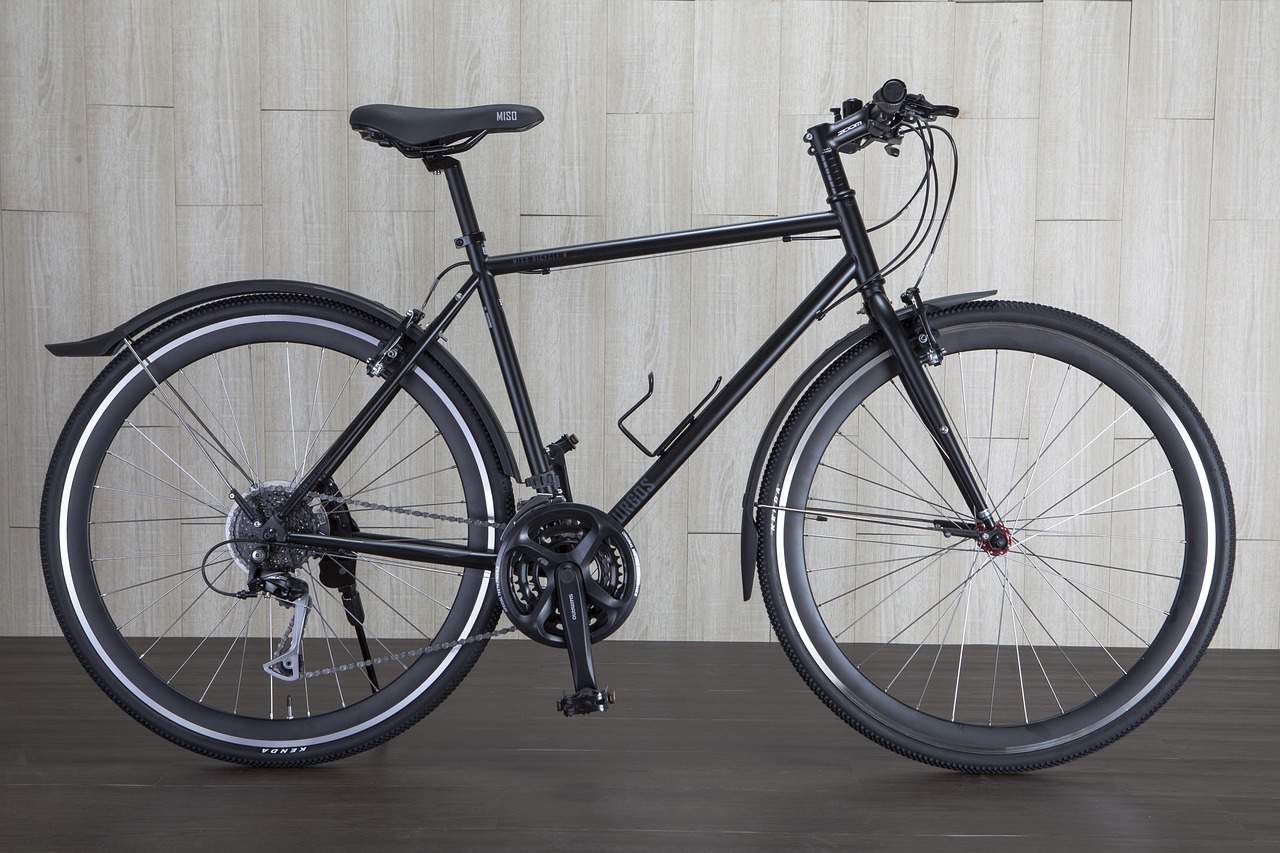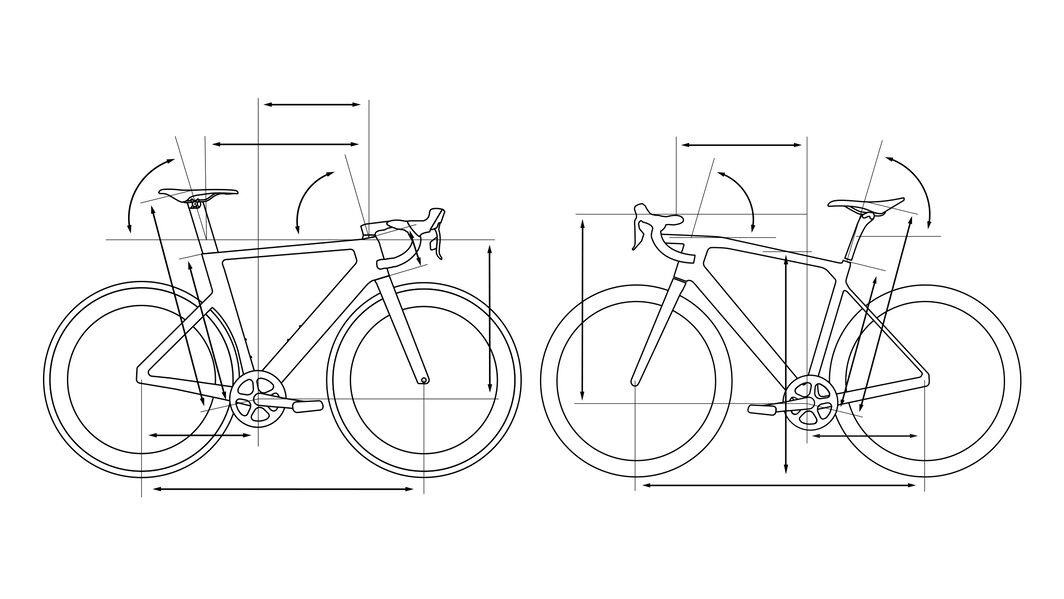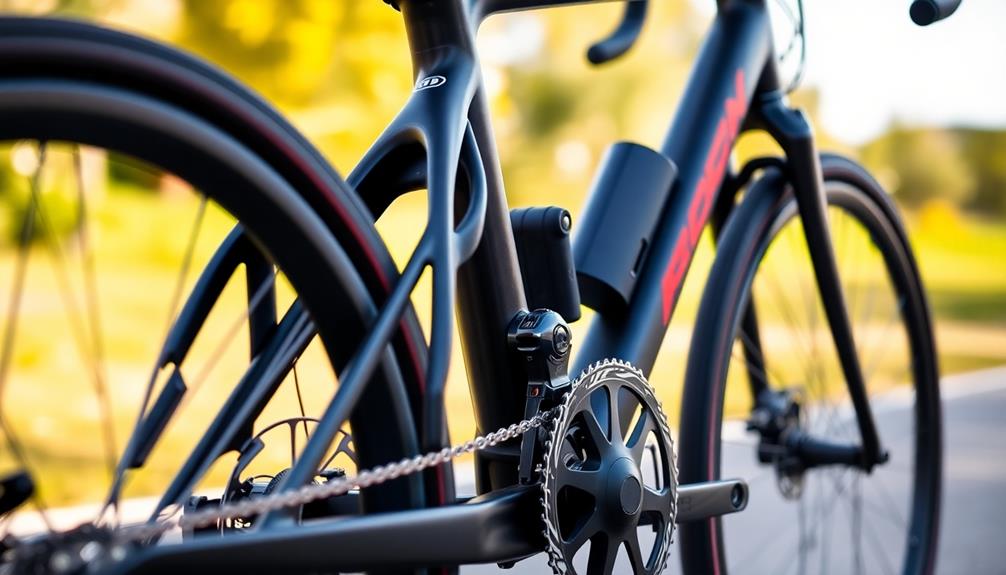Are you in search of a bicycle that goes beyond the ordinary? A bike that transports you to unimaginable destinations and provides you with unparalleled enjoyment? If so, the specialized hybrid bike is precisely what you’re after! This astonishing creation is ideal for both exercise and entertainment, positioning it as one of the most adaptable bicycles available.
Whether you’re an experienced rider or a complete beginner, this bike has something to offer everyone. In this article, we’ll be exploring why specialized hybrid bikes are perfect for fitness and fun. So read on for more!
Definition Of Hybrid Bikes
Hybrid bikes are a great combination of road and mountain bikes, offering the best of both worlds. They feature a lighter frame than mountain bikes but with thicker tires, making them perfect for a variety of terrain. Plus, they have flat handlebars like a road bike, allowing for improved maneuverability on city streets. Hybrid bikes are ideal for those who want to combine fitness and fun on their rides.
They offer an easy-to-ride design that makes them suitable for all ages and skill levels. With versatile gearing to handle any terrain and adjustable seat heights to fit your body size, hybrid bikes make cycling accessible to everyone. They also come in different frame designs to suit every rider’s needs and style preferences.
Overall, hybrid bikes are the perfect blend of comfort, performance, and versatility – allowing you to enjoy your rides no matter where you’re going or what type of terrain you’re riding on. With these features in mind, let’s look at the advantages of hybrid bikes regarding fitness and fun.
Advantages Of Hybrid Bikes
The advantages of hybrid bikes in terms of fitness and fun are clear. First, they offer a comfortable ride that allows you to enjoy your time on the bike without having to worry about straining your body. With their flat handlebars, hybrid bikes provide an upright riding position that puts less stress on your back and neck. Plus, adjustable seat heights make sure that the bike is tailored to your size and body type so you can find the perfect fit.
Second, these bikes are incredibly versatile and able to handle a variety of terrain with ease. Featuring thicker tires and a wide range of gears, they allow you to take on any challenge while still providing a smooth ride. This makes them suitable for both casual cycling around town or tackling more difficult trails with confidence.
Finally, hybrid bikes look great! They come in a variety of colors and styles that let you express yourself through your ride. Whether you’re looking for something sleek and modern or something colorful and eye-catching, you’re sure to find the perfect bike for your style.
With all these benefits in mind, it’s no surprise why hybrid bikes are the perfect choice for fitness and fun. Now let’s take a look at another important factor – the durability of hybrid bikes.
Durability Of Hybrid Bikes
No matter the activity, durability is always an important factor when it comes to selecting a bike. Hybrid bikes are designed with longevity in mind and are built to withstand rough terrain. Their frames are made from sturdy aluminum or steel and feature increased strength in key stress points. They also come with strong tires that can handle any terrain while maintaining their grip on the road.
Furthermore, hybrid bikes have components that will last for many years of use. Brakes and gears are made of high-quality materials that won’t wear out over time, while their ergonomic design ensures an enjoyable ride no matter where you’re going.
TIP: When shopping for a hybrid bike, look for models with quality components such as sealed bearings, rust-resistant chains, and adjustable stems for a more custom fit. These features will ensure your bike stays in great condition for longer so you can enjoy more fun rides ahead!
With their improved durability, hybrid bikes provide a lasting solution for both fitness and fun activities. Now let’s take a look at the performance benefits these bikes offer.
Performance Benefits
For those seeking a reliable bike that can provide an enjoyable ride, a hybrid bike is an ideal choice. These bikes have superior performance features that make them perfect for fitness and fun. Hybrid bikes are easy to maneuver due to their lightweight frames and wide handlebars, allowing you to move quickly and easily over any terrain. They also come with smooth-shifting gears that help you climb hills or speed through flat surfaces with ease.
In addition, hybrid bikes offer riders a comfortable ride thanks to their shock-absorbent suspension systems and ergonomically designed saddles. So whether you’re riding on pavement or trails, you can be sure of a smooth ride every time.
With the combination of durability and performance benefits, hybrid bikes are the perfect choice for bike enthusiasts looking for a reliable ride that will last for years to come. From conquering tough terrain to taking leisurely rides around town, these bikes will provide hours of enjoyment – no matter what your goal may be. With all these features in mind, let’s explore the accessories available for hybrid bikes.
Accessories For Hybrid Bikes
From stylish handlebar grips to slick mudguards, accessorizing a hybrid bike can take your ride to the next level. With the right features, you can customize your bike to fit your own unique style and needs. Figuratively speaking, you can turn an ordinary hybrid bike into a work of art with just a few simple additions.
There are plenty of accessories available for hybrid bikes that will make your ride even more enjoyable. You could opt for lights and reflectors if you plan on riding at night or in low-light conditions; fenders if you want to keep yourself dry when the roads are wet; or racks and panniers if you need extra storage space for carrying items while biking. No matter what type of accessory you’re looking for, there’s sure to be something to suit your needs.
With all these options available, it’s never been easier to customize a hybrid bike according to your individual preferences. Whether it’s extra protection against the elements or increased functionality, accessories like these will help enhance your overall cycling experience – allowing you to have even more fun while riding! Now that we have discussed some of the accessories available for hybrid bikes, let’s move onto cost comparison between different models.
Cost Comparison
When buying a hybrid bike, cost is often an important factor. From entry-level models to high-end options, there are plenty of choices on the market – each with their own unique features and price tags. Fortunately, you don’t have to break the bank in order to get a quality hybrid bike that will last you for years.
If you’re looking for something more affordable, there are plenty of budget-friendly options available. These bikes tend to be lighter and simpler than mid-range or higher-end models – making them great for casual rides or short commutes. The downside is that they may not be as durable or feature as many bells and whistles as pricier models.
On the other end of the spectrum, more expensive models usually come with better components and additional features such as suspension forks, disc brakes, and wider tires – making them ideal for serious cyclists who want a reliable ride for longer distances. While these bikes may cost more upfront, they can save you money in the long run since they’ll likely last longer than cheaper alternatives.
Now that we’ve discussed cost comparison between different models of hybrid bikes, let’s move onto types of hybrids available on the market today.
Types Of Hybrid Bikes
The hybrid bike market has evolved over the years, with manufacturers now offering a variety of specialized models to suit different needs. From urban commuters to weekend warriors, there are hybrids available for almost any type of rider. Let’s take a look at some of the most popular types:
- Hybrid Comfort Bikes: These bikes feature a relaxed upright riding position and comfortable saddle, making them perfect for casual riders who prioritize comfort over speed.
- Hybrid Road Bikes: Also known as ‘fitness bikes’, these models are designed for speed and efficiency. They typically have thinner tires and lower handlebars than comfort bikes – allowing riders to go farther and faster.
- Hybrid City Bikes: Designed for urban commuting, these hybrids feature sturdy frames, wide tires, fenders, racks, lights and other accessories to make getting around town easier.
- Electric Hybrid Bikes: For those who want an extra boost while pedaling, electric hybrids combine traditional components with a battery-powered motor that helps propel the bike forward.
- Specialized Hybrid Bikes: If you’re looking for something really unique and versatile, then specialized hybrid bikes may be the way to go. These models combine features from both mountain and road bikes – making them ideal for everything from leisurely rides to challenging workouts.
So whether you’re looking for something speedy or more relaxed, there’s sure to be a hybrid that meets your needs – no matter what type of cyclist you are!
Popular Brands
It’s a common belief that specialized hybrid bikes are the perfect choice for fitness and fun. But is that really true? To answer this question, let’s take a look at some of the most popular brands on the market today.
When it comes to specialized hybrids, there are two major players:
- Trek: This American company offers an impressive range of mountain and road-style hybrids, from fast-paced fitness models to more comfortable city bikes. Their e-bikes also offer great power and performance.
- Specialized: From entry-level hybrids to high-end racing machines, this California-based manufacturer has something for everyone – including electric options for those who want an extra boost while riding.
No matter what type of rider you are, one thing is certain – specialized hybrid bikes offer all the benefits of both mountain and road bikes in one package. Thanks to their versatility and durability, they’re ideal for everything from leisurely rides around town to challenging workouts on difficult terrain. So whether you’re looking for a reliable commuter or a versatile machine for getting fit, these powerful hybrids have you covered.
Now that we’ve explored the various types of specialized hybrid bikes available today, let’s move on to safety considerations when it comes to choosing your new ride.
Safety Considerations
When selecting the perfect specialized hybrid bike, safety should always be top priority. From choosing the right size to ensuring a proper fit, there are several important steps you can take to make sure your ride is both comfortable and safe.
Here are three key ways that riders can ensure their safety when it comes to specialized hybrids:
1) Get the right size: Before you buy a bike, make sure you get one that fits your body properly. The wrong size bike can lead to discomfort, difficulty controlling the bike, and even injury.
2) Wear protective gear: Helmets, knee pads, elbow pads and other protective gear are essential for any cyclist – especially those riding specialized hybrids on challenging terrain. Not only do these items help keep you safe in an accident, but they also provide extra comfort.
3) Test out the bike: Once you’ve found the perfect bike for your needs and made sure it fits properly, take it for a test ride on flat ground or a paved path. This will allow you to get used to how it handles before tackling more difficult terrain.
It’s important to remember that while specialized hybrid bikes can be great fun, they come with certain risks – just like any type of cycling. Taking these precautions before heading out will help ensure your ride is as enjoyable and safe as possible. Now that we’ve discussed some of the most important safety considerations when selecting your specialized hybrid bike, let’s move on to maintenance tips for keeping your ride in top condition.
Maintenance Tips
To keep your specialized hybrid bike in tip-top shape, regular maintenance is key. With a few simple steps, you can extend the life of your bike while also ensuring an enjoyable ride each and every time.
One of the most important maintenance tasks is regularly cleaning and lubricating your chain. This will help prevent rust and wear, as well as improve your pedaling efficiency. It’s also important to check the brakes on a regular basis to make sure they’re working properly. You should also keep an eye on the tires; if they look worn or are losing pressure quickly, it may be time to replace them.
Finally, check all of the components on your bike frequently to ensure everything is tight and secure. A few minutes spent inspecting bolts and screws can save you from costly repairs down the line.
By following these basic maintenance tips, you can extend the life of your specialized hybrid bike and keep it running smoothly for years to come. Now that we’ve discussed tips for keeping your bike in good condition, let’s turn our attention to riding conditions and terrain – both of which are essential factors when choosing a specialized hybrid bike for fitness or fun.
Riding Conditions And Terrain
Choosing the right specialized hybrid bike for your needs depends largely on where you plan to ride and the terrain you’ll encounter. If you’re looking to ride on roads or smooth trails, a traditional hybrid is an excellent choice. These bikes combine light weight with speed and efficiency, allowing riders to quickly cover longer distances while still enjoying a comfortable ride.
For those seeking more of an adventure, mountain hybrids are ideal. With wider tires, higher clearance, and a more upright riding position, these bikes are perfect for tackling rough terrain and uneven surfaces. Mountain hybrids also feature hydraulic disc brakes for increased control when descending steep hills or navigating tricky trails.
No matter where you choose to ride your specialized hybrid bike, make sure it’s equipped with adequate suspension to handle any bumps along the way. A lightweight frame with front suspension can provide just enough cushioning to make your ride enjoyable without sacrificing speed or efficiency.
With its versatility and capability on different terrain types, a specialized hybrid bike is perfect for both fitness and fun – making it an ideal choice for cyclists of all levels. Whether you’re taking part in cycling events or just exploring the great outdoors, a hybrid can get you there in style and comfort.
Cycling Events
Whether you’re an avid cyclist or just starting out, cycling events are a great way to test and improve your skills while having fun. With races of all lengths and difficulty levels, there’s sure to be an event that’s perfect for you. From short-distance road races to multi-day off-road adventures, specialized hybrid bikes are the perfect choice for these events – combining speed with comfort and agility.
For those looking to take part in endurance events, lightweight hybrids are an ideal choice. Their quick acceleration and efficient pedaling make them perfect for longer distances and sustained efforts. And with their more upright riding position, they can help reduce fatigue on legs and lower back over extended rides.
Meanwhile, mountain hybrids are the perfect pick for those who want to explore more challenging terrain. Their wider tires provide grip on slippery surfaces, while their front suspension helps absorb shock from rocks, roots, and other obstacles. Plus, the higher clearance allows riders to navigate through deeper trails without worrying about hitting the ground too hard.
No matter what type of cycling event you choose to participate in, a specialized hybrid bike is sure to get you there with ease – making it an excellent choice for any rider looking for fitness and fun!
Recommendations For Different Riders
For all cyclists out there, specialized hybrid bikes are the ultimate ride. They’re like a dream come true – providing the perfect blend of speed and comfort, agility and stability. With their lightweight frames and adjustable geometry, they’re almost magical in their ability to make long rides feel effortless. And with their wide tires and suspension systems, they can take you anywhere your heart desires!
For those looking for an exhilarating ride on road or trail, look no further than a specialized hybrid bike. With its lightning-fast acceleration and responsive handling, it will make even the most challenging terrain feel like child’s play. Plus, its more upright position makes it ideal for both beginners and experienced riders alike.
There truly is no better way to experience cycling than with a specialized hybrid bike – it’s like having your own personal genie in a bottle! Whether you’re looking for thrills on the open road or off-road adventure in the wilderness, this amazing machine is sure to take your rides to the next level. Now that we’ve explored why specialized hybrid bikes are perfect for fitness and fun events, let’s turn our attention to the fitness benefits of cycling with one.
Fitness Benefits Of Cycling With A Hybrid Bike
For those looking to get fit and have fun while they’re at it, cycling with a specialized hybrid bike is the perfect way to do so. Here are just some of the fitness benefits of cycling with this unique machine:
• Increased cardiovascular health: Cycling is an excellent form of aerobic exercise that strengthens the heart and lungs while delivering oxygen-rich blood to all parts of the body. With a specialized hybrid bike, you can ride safely and efficiently, without putting too much strain on your joints.
• Improved muscular strength: Cycling utilizes both lower and upper body muscles for power, endurance and stability. With each pedal stroke, you’ll be building muscle strength in your legs, core and arms. Plus, you’ll be toning your abdominal muscles as well!
• Greater flexibility: As you move through each pedal stroke, your body will be stretching in different directions. This helps improve flexibility in your hips, back, shoulders and neck – all important areas for cyclists.
• Enhanced mental clarity: Cycling can improve concentration and focus by boosting endorphins in the brain – making it a great activity for clearing your head and relieving stress.
At the end of the day, cycling with a specialized hybrid bike offers numerous physical benefits along with plenty of opportunities for enjoyment. Now let’s look at some fun activities you can do with one!
Fun Activities With A Hybrid Bike
Cycling with a specialized hybrid bike isn’t just great for fitness but can also be a lot of fun. Here are some activities that you can enjoy:
- Off-road exploration: If you’re feeling adventurous, explore the trails around your area. Hybrid bikes are designed to handle off-road terrain with ease and comfort, so you can take on dirt paths, gravel roads and bridleways without any trouble.
- Commuting: For those who live in cities or close to town centers, why not use your hybrid bike for commuting? You’ll get to your destination faster than walking and it’s much more enjoyable than taking public transport. Plus, it’s an environmentally friendly way of getting around!
- Recreational rides: Don’t forget about recreational rides! Get together with friends and family for leisurely cycles around the parks or take a ride along the coastline – whatever takes your fancy. With a hybrid bike, you can go wherever you want and make the most of your day.
So whether it’s for fitness or fun, a specialized hybrid bike is perfect for your needs. With its versatility and comfortability, this is one machine that won’t let you down!
Frequently Asked Questions
What Is The Difference Between A Hybrid Bike And A Mountain Bike?
Hybrid bikes have become increasingly popular in recent years, with nearly one million of them sold every year. While they may look similar to mountain bikes at first glance, there are a few key differences that set them apart. In this article, we’ll explore why hybrid bikes are great for fitness and fun.
One of the most obvious differences between hybrid and mountain bikes is the wheel size. Hybrid bikes typically feature larger wheels than mountain bikes, which helps provide more stability when riding on a road or bike path. They also tend to be lighter than mountain bikes and have wider tires that make it easier to navigate uneven terrain. Additionally, many hybrids come equipped with suspension forks that help absorb shocks from bumpy surfaces.
Another way in which hybrid and mountain bikes differ is their gearing system. Mountain bikes often use multiple chainrings to give riders a wide range of gears, while hybrid bicycles generally feature fewer chainrings with fewer gears overall. This setup makes hybrids easier to pedal on flat roads and paths and provides better fuel efficiency when pedaling uphill. Plus, hybrid bicycles usually have ergonomic handlebars that help reduce fatigue during long rides.
Overall, specialized hybrid bikes are an excellent choice for those who want a versatile bicycle for fitness or recreation purposes. They’re lightweight enough for commuting yet durable enough for off-road adventures, providing riders with the perfect combination of comfort and performance on any terrain or surface type. With features like suspension forks and ergonomic handlebars, these bicycles offer a great option for anyone looking to enjoy some outdoor exercise while having plenty of fun!
How Much Does A Hybrid Bike Typically Cost?
When it comes to choosing a bike, many riders find themselves torn between a hybrid and mountain bike. But how much does a hybrid bike typically cost? The answer can vary greatly depending on the bike’s model, type, and brand.
Hybrid bikes come in all shapes and sizes, with some models ranging from under $100 up to over $2,000. Generally speaking, entry-level hybrid bikes start around $200-$300, while more sophisticated models tend to cost closer to $1,000 or even higher. As with any purchase though, it’s best to shop around for the best deal you can find.
Overall, hybrid bikes offer an excellent value for money. Not only are they suitable for commuting and recreational riding but also for fitness training and long-distance cycling as well. With a bit of research, you’ll be sure to find a quality hybrid bike that meets your budget and suits your needs perfectly!
Is A Hybrid Bike Suitable For Long-Distance Rides?
Are hybrid bikes suitable for long-distance rides? If you’re looking for a reliable, comfortable ride that can take you across town or even cross-country, then the answer is an emphatic yes! Hybrid bikes offer the best of both worlds – mountain and road bike features – to provide cyclists with a versatile riding experience.
Figuratively speaking, hybrid bikes are like a Swiss Army knife: they have the tools to handle any situation. With their wide range of gears, suspension systems, and specialized components, hybrid bikes can tackle any terrain with ease. And because they’re lightweight yet sturdy, they’re perfect for tackling longer journeys.
Here are five reasons why hybrid bikes are great for longer rides:
- They provide more cushioning than traditional road bikes
- Their larger tires give cyclists better grip and stability
- Their lightweight frames make them easy to transport
- They offer plenty of gears for steep inclines or flat roads
- They come in a variety of styles and sizes to suit different riders
No matter how far you want to travel, hybrid bikes are up for the challenge. Thanks to their superior design and construction materials, these bicycles can take you places no other bike can go without breaking down or slowing you down. Whether you’re looking for an adventure or just trying to get from Point A to Point B in comfort and style – hybrid bikes have got you covered!
What Is The Best Terrain For Riding A Hybrid Bike?
What is the best terrain for riding a hybrid bike? Hybrid bikes are designed to be versatile and can handle a variety of terrains. However, some terrains are better suited to hybrid bikes than others.
The most common terrain to ride a hybrid bike on is pavement. Pavement offers a smooth, even surface with little resistance, making it easy for cyclists to maintain their speed over long distances. Plus, there’s usually plenty of room on the road so you don’t have to worry about obstacles or traffic.
In addition to on-road cycling, hybrids can also handle light off-roading relatively well. This type of riding is great for those who want a bit more adventure in their rides. Here are four specific terrains that hybrids can take on:
- Gravel – Riding on gravel roads is perfect for hybrids as they offer enough stability while still providing an exciting off-road experience.
- Dirt trails – Smooth dirt trails provide traction without being overly rough or difficult to navigate like rocky mountain trails may be.
- Trails with roots and rocks – Hybrids are capable of tackling these types of trails but the rider must be careful when navigating around obstacles like roots and rocks as the tires may not provide enough grip.
- Sand – Although sand can provide an enjoyable ride, it requires extra effort from riders due to its softness and lack of stability.
Overall, hybrid bikes offer great versatility when it comes to terrain selection and can adapt to many different surfaces as long as riders remain mindful of the conditions they’re riding in and adjust accordingly. With the right set up, hybrids can easily become your go-to bike no matter where you decide to ride!
Are There Any Safety Features I Should Consider When Buying A Hybrid Bike?
When you decide to buy a hybrid bike, safety features should be a top priority. Hybrid bikes combine elements of both mountain and road bikes, making them suitable for different terrains. As with any bike, safety is important, so it’s worth considering the following features before you make your purchase:
Firstly, look for a bike that has strong brakes. When riding on varying terrain, it’s important to have brakes that can stop quickly and safely. Disc brakes are a great option as they provide reliable stopping power in all weather conditions. Additionally, look out for good suspension on the front fork of your bike. This will help reduce the impact when riding over bumps or obstacles in the road.
Secondly, make sure the frame is made from durable material such as aluminum or steel and is designed to absorb shocks when riding off-road trails. Additionally, opt for wider tires which provide more grip and stability when riding on gravel paths or wet surfaces. Lastly, consider investing in some extra safety accessories such as lights if you plan to ride at night or reflective clothing so drivers can spot you more easily during the day.
TIP: Test ride your chosen hybrid bike before making a purchase – this will help ensure you select one that feels comfortable and secure!
Conclusion
In conclusion, hybrid bikes are the perfect blend of mountain and road bikes, providing an ideal combination of comfort and performance. Whether you’re looking for a leisurely ride or a serious workout, hybrid bikes offer something for everyone. They are relatively inexpensive compared to other types of bikes, making them a great option for those on a budget. Plus, with the right safety features in place, you can feel safe while exploring your surroundings.
The terrain is also an important factor to consider when purchasing a hybrid bike. From dirt trails to city streets, there’s no limit to where you can take your bike. It’s like having two bicycles in one! Whether you’re cruising through the woods or taking on an uphill climb, hybrid bikes provide a smooth and enjoyable ride.
Overall, hybrid bikes are an excellent choice for both fitness and fun. With the right features and terrain in mind, they can help you reach your goals while still having plenty of fun along the way. Like a jack-of-all-trades master of none, hybrid bikes provide the best of both worlds – comfort and performance without breaking the bank!


















